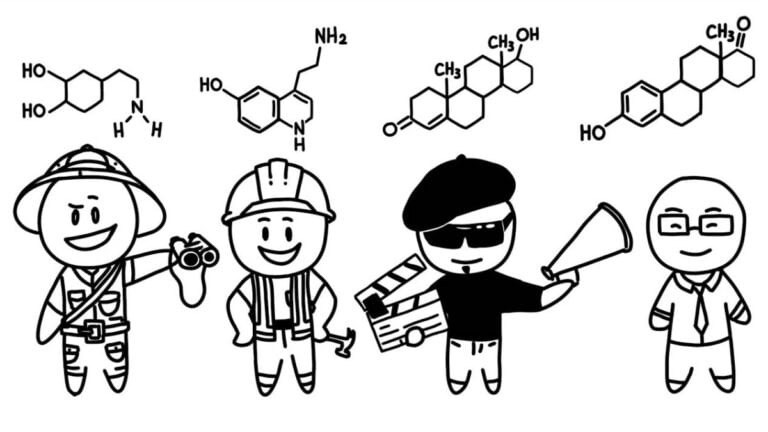Dreaming of a prosperous and constantly growing company, the owner understands that nothing can be achieved alone. You need an active and responsible team, each member of which looks in the same direction as you. Where to start in order to make like-minded people out of your employees, what mistakes can be encountered along the way and how to prevent them?
I advise you to start at the top level – competently setting goals for the company’s top management. How to demand something from ordinary employees if the company’s development strategy for one/three/five years is not fully clear to department directors.
There are different ways to set goals. Someone uses a directive type of leadership: the leader has single-handedly made decisions, given orders and waits for everything to be carried out. I used a democratic method, where goals are developed with the help of the employees themselves. This method can become dangerous if used incorrectly.
What mistakes did we make?
Incorrectly formulated goal
The development of annual goals usually occurs in strategic sessions. How it was with us: once a year, the service managers and I met, discussed, and formed a certain pool of tasks/goals. Then all the goals were recorded on a poster. Moreover, every goal was clear to us at the moment. But it turned out that when people started working on it, it ceased to be understandable to the performer.

An incorrectly set goal is “to improve the quality of service” – how to improve it, with the help of what measures, with what metrics to evaluate? Moreover, when we added measurability, for example, we wrote to improve NPS (customer loyalty index) by a certain number of indicators, other problems arose: insufficient frequency of collecting these indicators, etc.
When we returned a year later to evaluate the results, it turned out that 50% of the tasks had not been completed, and 20% were so vaguely formulated that we did not understand what exactly we planned to do. At the same time, people coped well with the tasks that they had already done, but they were unable to do new tasks.
Using task schedulers
I tried every similar program I could find. And I tried to carefully and carefully record all my tasks there, myself and with the help of assistants. As a result, a huge, overwhelming “footcloth” accumulated and each meeting turned into studying the problem book and finding out what was happening with each task. It was absolutely impossible to systematize the tasks.
Increased obligations
Usually at such meetings everyone is very enthusiastic. There are colleagues and a manager nearby who support, and as a result, the euphoric top manager sets himself a large, difficult task that he is unable to complete. Current activities, the operating system is overwhelming and now there is no energy for strategic tasks. According to the Eisenhower matrix, such goals automatically moved into group B (important, but not urgent). The only thing I, as a manager, received a year later from the owner of such a task was a beautiful story about why it was impossible to complete.
How to work to achieve a goal without draining resources?
All tasks must be divided into run – operational and change – change processes. It is important here that at the top level we monitor precisely the processes of change, and do not discuss turnover. All turnover takes place within the prescribed regulations and is delegated to employees. Exceptions are something major, for example, a large client coming in that creates a significant burden on the department, then further actions can be discussed.
To track tasks, we have implemented the Kanban methodology. This is such a large board that visualizes strategic tasks. Moreover, they are not static, they move in a certain time sequence. This is a flexible system and you can set any parameters here. All change processes are issued with deadlines and those responsible. They move in time and show the dynamics of completing these tasks. This technique allows you not only to plan upcoming tasks, but also to look retrospectively, for example, at the past quarter, track tasks that have been completed and analyze them.
Changed the frequency of meetings. At the management level, we communicate once a month; each manager discusses current tasks with their departments once a week.
5 minutes are allocated to discuss one task. If we understand that we have gone beyond the limit, then we take these tasks to a separate meeting, where everyone who is concerned usually comes.
If we see that some task is not moving, we block it and separately find out why there is no progress. We set aside time, most often one on one with the manager, to see what is missing. If, for example, there are not enough people to complete the task, then we submit a request to the HR department
How to prevent corporate culture from eating strategy for breakfast?
As for employees, here, in addition to the regulations that every company has, it is necessary to develop certain standards of behavior, rules and principles that must be adhered to.

Otherwise, it will turn out like in the Dave Logan quote: “Corporate culture eats strategy for breakfast.” In a company with an ineffective culture, employees will resist any change.
The best place to start is with the hiring process. We have a certain filter at the entrance for applicants. We must immediately understand how close a person is to how the company positions itself.
Here, the task of the HR department is to test those hired for work based on our values. Then, we conduct such testing every six months throughout the entire employee life cycle.
At such assessments, a representative of the HR department, an employee and his manager meet. The assessment is conditionally divided into two stages: in the first, the employee evaluates himself and presents real cases confirming this assessment. Next, the employee is assessed by his immediate supervisor. We use such meetings not only as an opportunity to synchronize with employees, but also to listen to them, to understand what they currently lack to solve their current problems. Find out whether it is comfortable to work and communicate with colleagues.
The company has an internal complaints process. Each employee, regardless of the scheduled meeting, can submit such a complaint in order to highlight the problem they encountered in a timely manner.
When company values turn into empty slogans and how to prevent this
For example, one of our values is expertise. This means that if a company wants each employee to have high expertise, it must provide him with every opportunity for training. We solved this problem with the help of Aktion University. Each employee can take any course free of charge to improve their knowledge. But now you can ask the employee: why, having a resource to increase his expertise, he did not do this and, as a result, lost a client.
Or, for example, cultivating team spirit (cooperation) in a company – this is not about corporate events at all. Although an amendment can be made here – these are not corporate events that are embarrassing to remember later. In our country, for example, team sports competitions in the fresh air and sports are popular, which is just useful for the team. But not only this – a set of measures is important here to create a favorable internal environment in which every employee will want to grow and develop.
Work in this direction should be systematic and cyclical. And of course, the owner of the construction of this process, albeit formally, is the founder/manager of the company, who must broadcast his values to the entire company. Well, the HR team is already tasked with analytics, modernization and maintaining corporate culture.









